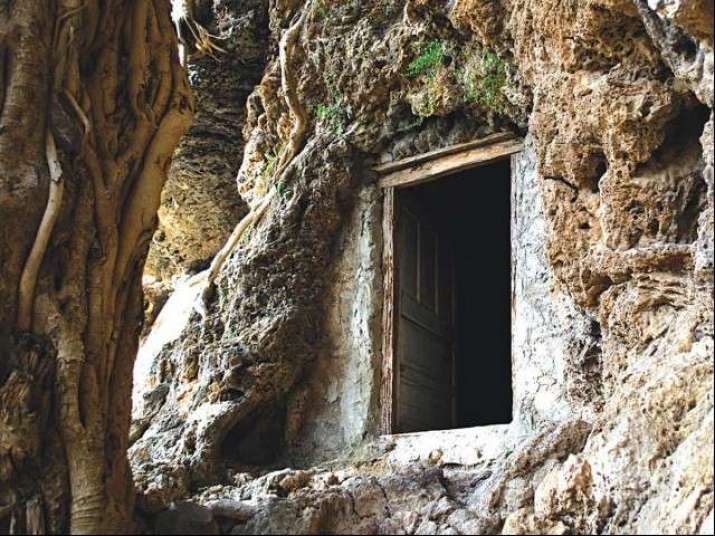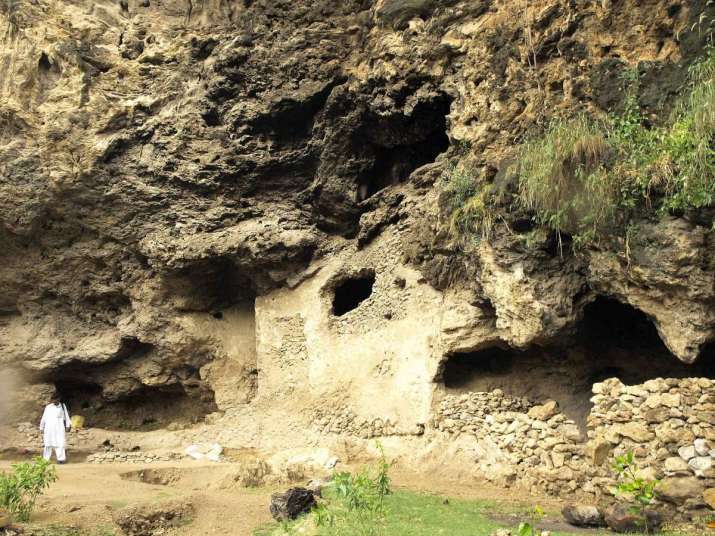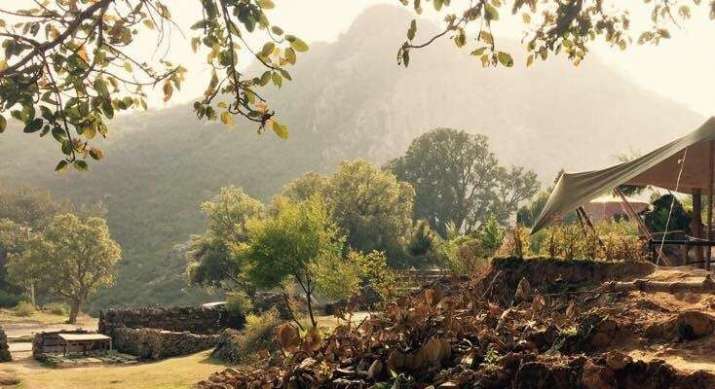NEWS
Shah Allah Ditta Buddhist Caves in Pakistan in Need of Preservation
 The ancient Shah Allah Ditta caves. From tribune.com.pk
The ancient Shah Allah Ditta caves. From tribune.com.pkThough overshadowed by other, more prominent Buddhist sites in Pakistan, the 2,500-year-old Buddhist caves of Shah Allah Ditta village attract hundreds of visitors each weekend. The caves themsleves and the amenities surrounding them, however, appear to have been neglected by the authorities, and plans for the regulation, conservation, and development of the site have yet to be put into action.
The caves, known locally as Sadhu ka Bagh, are located next to the to the shrine and tomb of Shah Allah Ditta, a Mughal-era dervish, in the Margalla Hills—part of the Himalayan foothills—located just north of Islamabad. The caves contain 2,400-year-old Buddhist murals, as well as Buddhist relics dated to the 8th century. According to archaeologists, the caves, and the natural platform-like formations surrounding them, were used for meditation by Buddhist monks, Hindu sadhus, and Muslim ascetics (during the Mughal period).
The centuries-old murals and the road leading to Shah Allah Ditta village (itself 700 years old), however, are crumbling away under the extreme weather conditions and unregulated tourist and research activities, and require immediate conservation and maintenance efforts to be preserved.
In June, the executive committee of the Prime Minister’s Endowment Fund approved Rs3.6 million (US$27,000) for the preservation and promotion of the site, but so far no steps in this direction have been taken.
 The Shah Allah Ditta caves are an ancient Buddhist monastic site. From wikipedia.org
The Shah Allah Ditta caves are an ancient Buddhist monastic site. From wikipedia.orgThe Capital Development Authority (CDA) has also made plans over the past year to develop the tourism potential of the site, which include preservation efforts andrepair of the roads leading to Shah Allah Ditta, but these plans have yet to be implemented.
“It is my long cherished desire to see this place develop during my lifetime as per the vision of archaeologist Ahmad Hasan Dani, who conducted thorough research on this site,” said Muhammad Ayub, a local of the area who is in his 70s and has spent his entire life in Shah Allah Ditta. (The Express Tribune)
“If this place is developed by the authorities, it can earn huge revenues from tourism,” Ayub continued, noting that hundreds of students, researchers, and tourists visited Shah Allah Ditta on Friday, Saturday, and Sunday and that this number could be increased further if the authorities would develop and maintain the resource. “I feel like living in a heaven here as this place is cold during summer and warm during winter. I don’t bother about anything here, I ask Allah for something, and I get it immediately.” (The Express Tribune, UrduPoint)
The pleasant climate, lush green surroundings, and historic importance of the region, the village, and the caves appeal many visitors. Muhammad Yar, a tourist visiting the region with his family, observed: “I was not convinced about coming to this place for recreation and enjoyment with my family considering that it is a historical site with no substantial entertainment-focused facilities, but was astonished to see the village-like environment, beautiful ducks along a stream, and a few food outlets offering tea and food. I decided to come again and spend an entire day here.” (The Express Tribune)
But he also expressed hope that the authorities would put more effort into preserve and develop the historic site, noting that “nations which protect their cultural and historical heritage have greater potential for prosperity.” (The Express Tribune)
 Picturesque scenery of Shah Allah Ditta. From wikipedia.org
Picturesque scenery of Shah Allah Ditta. From wikipedia.orgSee more
Shah Allah Ditta Caves Crumbling (The Express Tribune)
Rs3.7m approved for Shah Allah Ditta Caves (The Express Tribune)
Shah Allah Ditta Caves Custodian Of Rich Cultural Legacy, Needs Preservation (UrduPoint)
Custodian of rich cultural legacy needs preservation (The News)
Related news from Buddhistdoor Global
Seminar in Islamabad Highlights Historic Links Between South Korea and Pakistan
Is Time Running Out for the 5,000-year-old Mes Aynak Archeological Site in Afghanistan?
Restoration Workers Tamper with Orginal Buddha Sculptures at Bhamala Buddhist Complex, Pakistan
Pakistan Unveils 1,700-year-old Reclining Buddha Statue at Bhamala Archaeological Site
Related features from Buddhistdoor Global
Takht-i-Bahi: The Jewel of Pakistan’s Cultural Heritage
Diplomacy, Heritage, and Cultural Pride: Reviving the Buddhist Legacy of Islamic Pakistan
Pakistan, Sri Lanka, and Nepal: A New Bloc of Buddhist Communication?














